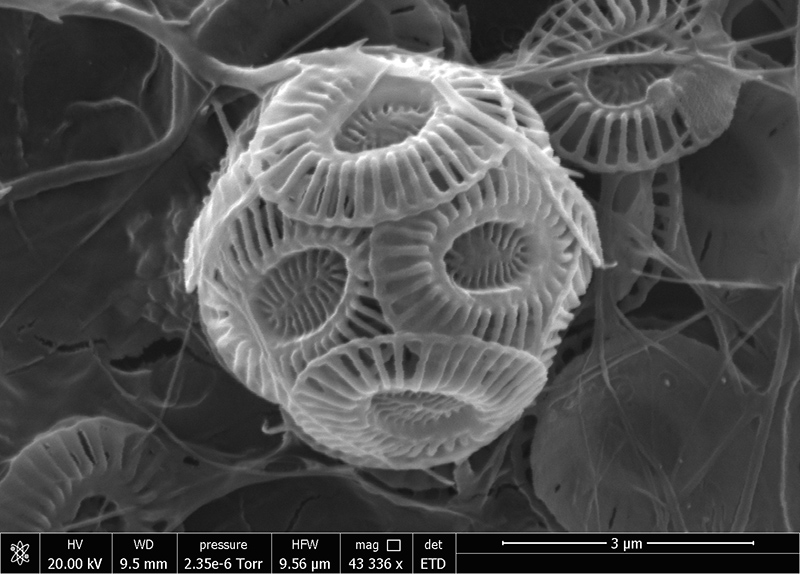Principal Investigator: Prof. Alex Poulton, Heriot-Watt University
Summary
The CHALKY project aims to quantify how diversity and ecology influence the oceans’ ability to absorb carbon dioxide, examining the influence of marine viruses and grazing by zooplankton, microscopic animals that form a vital part of the ocean’s food chain, on the dominant calcifiers during summer in the North Atlantic, coccolithophores.

Our project will improve understanding of what happens to CaCO3, a substance made by coccolithophores (a type of Phytoplankton) in the North Atlantic Ocean. We need to understand how these microscopic algae, at their peak CaCO3-making time, affect the ocean's ability to take up carbon dioxide (CO2), and what will happen as the ocean warms.
Impact
Our project will fill a critical knowledge gap by quantifying the balance of coccolithophore production and loss processes and their impact on C-cycling and air-sea CO2 fluxes. Our assessment of ecological interactions and impacts on seawater chemistry will be carried out while improving in situ and remotely sensed optical detection of coccolithophores to allow us to use Earth Observation data to scale our insights to the global ocean and historically using existing satellite data sets.
Background
The ability of the ocean to take up and sequester CO2 from the atmosphere is dependent upon its carbonate chemistry, with more alkaline waters taking up more CO2. When coccolithophores and other pelagic calcifying organisms form their CaCO3 scales and shells, they alter the alkalinity of the surface ocean and as they sink into the ocean’s interior they carry this alkalinity to depth. Reduction in surface ocean alkalinity through biological processes reduces the capacity of the ocean to take up further CO2 from the atmosphere, so that the activity of coccolithophores weakens the oceans’ C-sink.
Coccolithophores suffer high losses due to viral infection and zooplankton grazing, as well as sinking from the upper ocean in marine aggregates and marine snow. While viral infection and grazing may retain coccolithophore CaCO3 in the surface ocean, so that little alkalinity is lost to depth, sinking of their CaCO3 to depth will carry alkalinity into the deep ocean. Hence, the balance of these different loss process will determine how coccolithophores impact on ocean alkalinity, and how strongly their lives and deaths impact the ocean’s ability to absorb CO2.
Our current models struggle to replicate our observations of ocean alkalinity, leading to concerns over our accuracy to understand or predict the ocean’s C-sink. In the upper ocean, where atmospheric CO2 uptake occurs, our models over-consume alkalinity and so we need to better understand processes which retain coccolithophore material and alkalinity in surface waters.